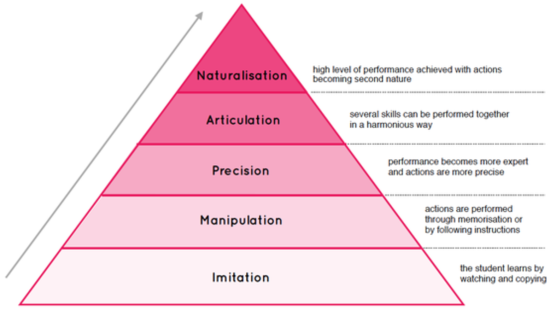Need analysis refers to the the analysis of the learner and the society such as learners’ capacity and ability, aptitudes and potential for learning, motivation, needs, interests and values as well as society’s orientation to nurturing or using the individual gainfully. It also provides a framework of assumptions about emotional, political, cultural, religious and geographical condition of a country. This helps the curriculum planners in the selection of objectives, selection of organization of learning materials and in suggesting appropriate evaluation procedures.
Need Assessment for Curriculum
In order to devise a curriculum and prepare course materials and methods based on the students’ and institution’s objectives, we had better carry out needs analysis. As Richards (2007) holds “a sound educational program should be based on an analysis of learner needs.” (p. 51).
Needs assessment is the basic element of curriculum which is usually done before, during and after the curriculum development in order to determine the course’s outline, materials and resources. Any course should be set up based on the students’ needs and we should be “sensitive to our learners and their needs” (Schmitt, 2000, p. 136). To this end, Flowerdew and Peacock (2001) contend that needs analysis attempts “to fine tune the curriculum to the specific needs of the learner.” (p. 178).
Need Analysis includes
Generally, in addition to determining the learners’ needs, materials and methods, needs analysis intends to;
- Ascertain the students’ objectives and goals.
- Find out what the students need to do in order to learn (learning needs).
- Determine what the students need to do in the target situation (target situation analysis).
- Check the place and its availability of the resources, equipment, materials and facilities (means analysis).
- Establish the students’ language level at the beginning of the program (present situation analysis).
Subdivision of Needs
In order to better study the learners’ needs, Hutchinson and Waters (1987) subdivide the needs into necessities, lacks and wants.
- Necessities:- Necessities refer to the requirement of the target setting. In other words, the linguistic elements the learners need to use in the target environment. In this way, the target situation analysis comes to the fore. Determining the necessities of the target situation is one of the aspects of what the learners need to learn.
- Lacks:- The other more important issue is to know what the learners already know. By determining what the learners have at their disposal, we can identify which of the necessities they lack. Therefore, by studying the gap between the necessities and the lacks we can select and teach the appropriate materials to the learners.
- Wants:- The necessities and lacks are the objective points that are determined by the needs analysis. However, the learners themselves have their own wishes and wants. The learners’ wants may be in conflict with the teachers’ or other parties perceptions. Therefore, any curriculum designer should consider the learners’ wants appropriately.
Importance of Need Assessment in Curriculum
The needs assessment is carried out to identify the aims, vision, principles, goals, learners’ key competencies, desirable characteristics, learning standards and indicators in curriculum development process. Information obtained during the needs analysis can be used to decide the appropriate contents for the students. It also ensures that the decisions about curriculum and instruction are correct, believable, unbiased, and made on the principle of reasonableness, reduced errors, and save the time and resources.
Remarkably, needs analysis is not a one-off exercise, rather it is an ongoing activity carried out continually during the whole teaching-learning processes. At this juncture, the important issue is the students’ involvement in the needs analysis processes. In order to encourage the students to participate in the learning process, the teachers and curriculum designers need to involve the learners in the needs analysis. As Peacock (2001) argues when the learners’ needs and wishes are not considered “the results can be frustrated and disappointed students.” (p. 283). Ultimately, the teachers should gather enough information about the students and the course and convert “needs analysis outcomes into course content and procedures” (Lynch, 2001, p. 394).
References
Hutchinson, T., & Waters, A. (1987). English for specific purposes: A learning centered approach. Cambridge: CUP.
Lynch, T. (2001). Promoting EAP learner autonomy in a second language university context. In J. Flowerdew & M.
Peacock (Eds.), Research perspectives on English for academic purposes (pp. 390-403). Cambridge: CUP.
OTHER RELATED POSTS



